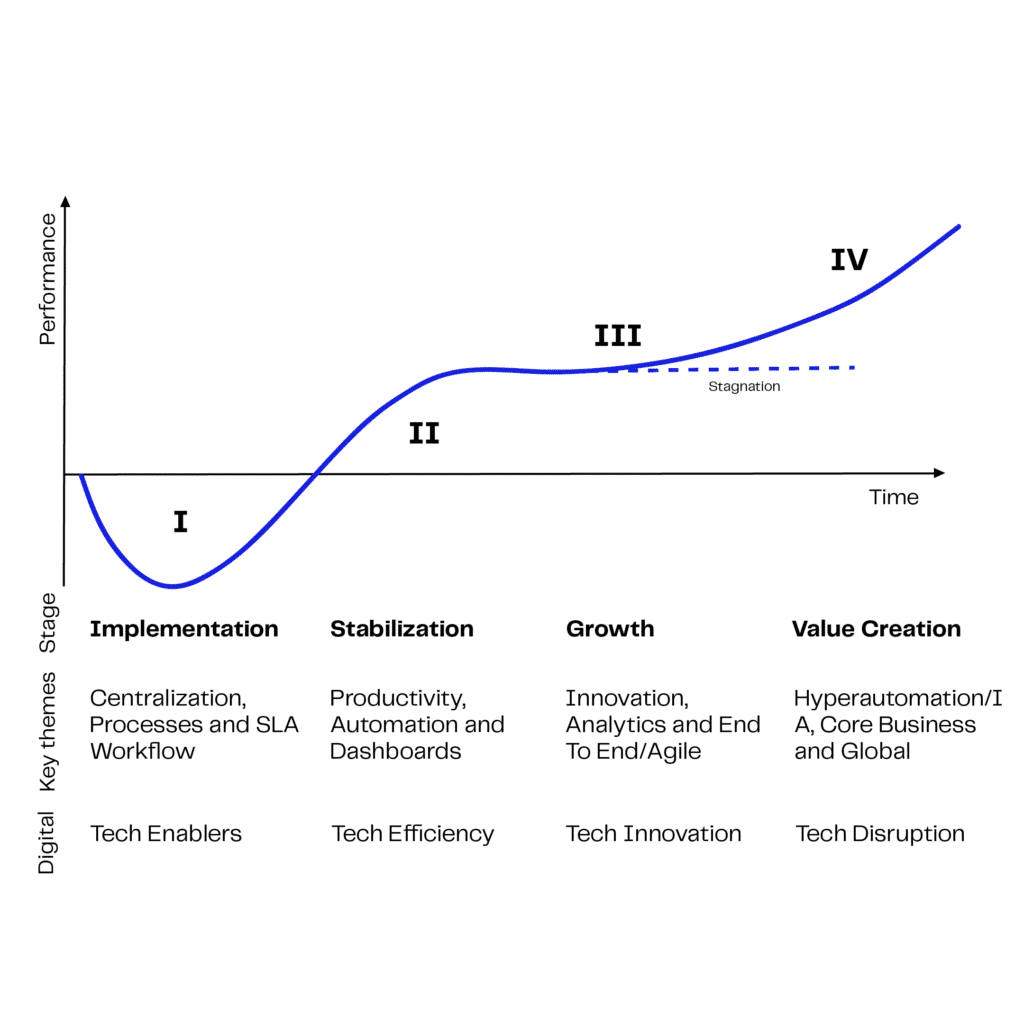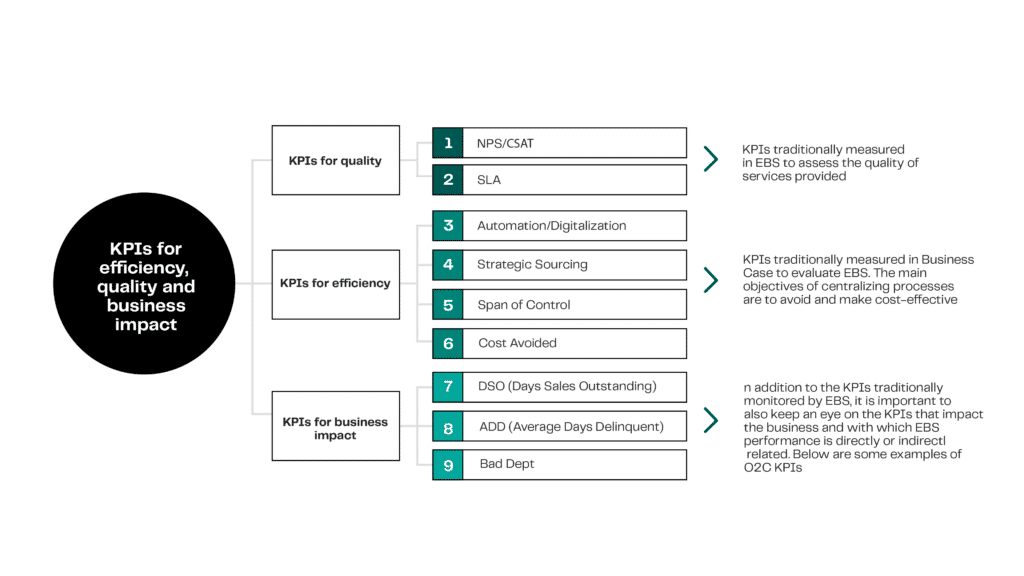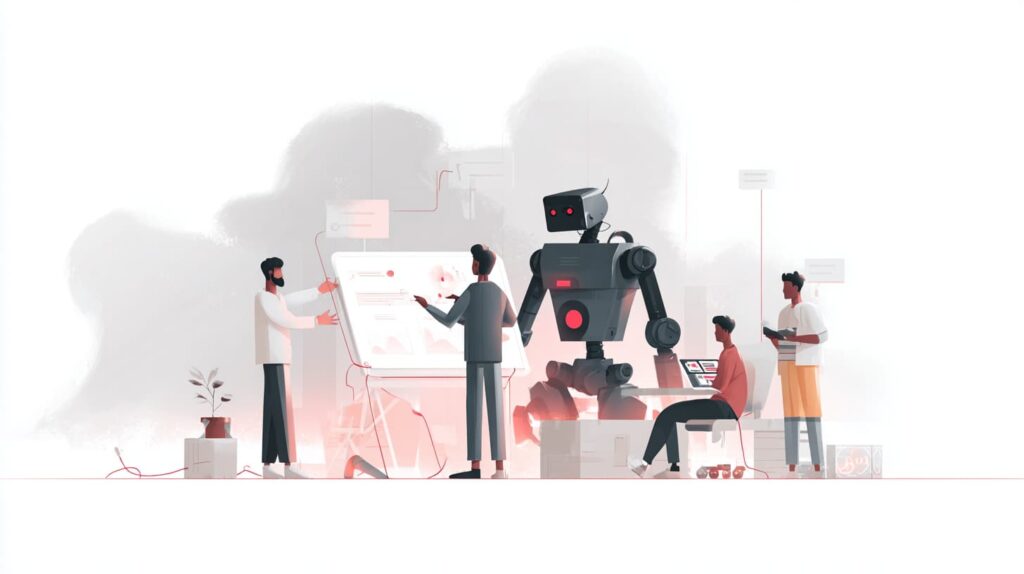By Ricardo Avila
- SSC (Solution Center or Shared Services) or GBS (Global Business Service) is a structure typically responsible for carrying out business support processes.
- It is part of a strategy to centralize processes with a focus on gains in scale, standardizing execution and managing demands with a focus on efficiency and quality.
- The article presents how EloGroup’s project to implement a Shared Cost Centre in a global agro-mining company translated into significant results, improved efficiency and gains for the entire organization.
The Shared Services or Solutions Center (SSC) is a company structure that is usually responsible for carrying out business support processes (most commonly, but not limited to, back-office services). It is part of a strategy to centralize processes with a focus on gains in scale, standardize the execution and management of demands with a focus on efficiency. It aims to incorporate best practices and solutions that make processes increasingly digital, providing data-driven improvements and decision-making to create value for the business areas.
In many organizations, the SSC is an early adopter in the digital transformation process. This is due not only to market trends and best practices in technology, but also to the need to reinvent themselves to reach new levels of cost savings and efficiency – metrics of continuous success for any SSC – as well as better customer experience, in an integrated and digital way, which are basic business values these days.
In this article, we will present how a journey of EloGroup initiatives with the SSC of a global agro-mining company translated into significant results, improved efficiency and gains for the entire organization.
About the client
The organization is an agro-mining company which is part of a global group that, in Brazil, operates production and distribution units throughout the territory employing 15,000 professionals.
The implementation journey of the Shared Solutions Center began between 2018 and 2019, reaching more than 300 employees and adding areas from Order to Cash (Credit Solutions, Financial Solutions – Accounts Receivable, Portfolio Management Solutions), Source to Pay (Procurement Solutions and Financial Solutions – Accounts Payable), Record to Report (Accounting and Tax Solutions), Hire to Retire (HR Solutions), as well as the areas of Continuous Improvement, Automation, Data Intelligence and Facilities Solutions.
The partnership with EloGroup
EloGroup began working with the client in 2019 on projects related to:
- ERP post-implementation;
- Transfer of new areas to the SSC;
- Process transformation;
- Automation and innovation with a focus on leveraging the efficiency gains capture curve for the company; and
- Supporting the SSC in the evolution and pioneering of the digital transformation discussion.
Since then, we have carried out more than 50 projects with the company, supporting SSC initiatives involving a variety of topics:
- Review of the operating model and structure for an end-to-end vision;
- Development of more than 150 automations;
- Implementation of new data engineering environments;
- Implementation of hyper-automation solutions in processes;
- Construction of optimization algorithms and analytics modeling; and
- Implementation of new technologies in processes.
What were the pains faced by the client in the context of the SSC?
A constant challenge for SSC has always been to deliver the service with maximum efficiency and quality on a day-to-day basis and, at the same time, to keep reinventing itself to make it even better. This operating model has required the team to develop a mindset of continuous innovation, based on key capabilities in processes, technology and data, as a way of having the lenses that enable them to see viable solutions for the company’s context beyond day-to-day problems.
Diagnosis and discovery
Ever since we started operating, the challenge has always been to increase value capture through a combination of quickwins and structuring solutions. Both should take the SSC operation and its results to a level of excellence that includes the digitization of operations, continuous improvement in SLAs and NPS, efficiency gains in team execution and value creation through greater use of data as part of the service, as well as proactive action with the business areas.
Lenses applied
Our work on different projects has combined our TAM approach (which multiplies the management lens with technology and data analysis disciplines) as a way of ensuring greater capacity to implement in practice the solutions developed throughout the work.
Below are some examples of the tools that combined to shape the lenses:
- Technology (automation stack with RPA, BPMS/ESM, Power Platform, Chatbot, Applications, CRM etc.);
- Data (PowerBI stack, Azure Data Services, Python, Pipeline automation, Data Lake connection, etc.); and
- Processes (process architecture and scope, service catalog, roles and responsibilities, business rules, KPIs/SLAs, etc.).
At the same time as EloGroup seeks to connect the lenses with the technological stack available to the client – as a way of speeding up the implementation of real solutions in the processes – we use different formats of methodology to classify the opportunities and frame the best solutions (investment x return and technical feasibility) based on structured forms of application:
- End-to-end discovery process, business case, delivery and change management;
- Semi-structured agile workshops incorporating benchmarks to accelerate the transformation and digitalization process; and
- Process of continuous monitoring of processes to propose improvements in day-to-day operations, based on the demands identified by the areas together with the capabilities of the technical team.
Throughout the different projects carried out in recent years on this journey of SSC transformation, we have always had a combination of different methodologies as a backdrop. The vision of the framework above brings together the main practices that have supported the evolution of themes that are aligned with the main trends at a global level, always seeking to combine value capture with innovative capacity both inside and outside the SSC itself, which is increasingly integrated into the business.
Management
Through the lens of management:
- We rethought the organizational structure and the dynamics of the operating model centered on a primary end-to-end vision;
- Implementation of agile squads and an integrated project and continuous improvement model; and
- Support in implementing the innovation hub with a focus on relationships with dozens of startups, among others.
Technology
Through the lens of technology, we have worked on different automation cycles, implementing more than a hundred solutions in the main End-to-End structures (Order to Cash, Source to Pay, Attract to Retire, Record to Report), supporting new technologies and process applications. Among the main capabilities in hyperautomation:
- Robotization of processes (RPA);
- BPMS/ESM;
- Applications;
- Power Platform;
- Chatbot;
- CRM; and
- Integrating automations with data.
Data and analytics
Under the lens of data and analytics, we have developed dozens of dashboards with hundreds of recurring users throughout the company, as well as advanced analytics solutions:
- Algorithms and optimization models in OTC (Order to Cash) and STP (Source to Pay);
- Support in implementing a new environment and data processing routines in a more integrated way;
- Data solutions and dashboards inside and outside the SSC; and
- Creating an integrated view of data sources and their consumption (single source of truth).
Challenges
The project’s main challenges included the following items:
- Digital skills: a resignification and reskilling of the execution team is essential to provide the teams with their own capacity and autonomy to drive improvements in the different aspects of the digital transformation, beyond operational delivery and day-to-day execution;
- Organizational ambidexterity: the challenge of continuing to do the basics well, the delivery of all SSC services at high performance, combined with the continuous quest to reinvent the way of doing things, being more digital, efficient and anticipating the customer; and
- Data infrastructure: Throughout the journey of using data to develop reports and data solutions (dashboards and algorithms), one of the biggest challenges has been to combine the restrictions of connecting directly to the original data sources with the provision of infrastructure services and a data environment suitable for the volume and level of processing. We know that the evolution of maturity is gradual, and, for this reason, alternative solutions were implemented as a way of guaranteeing the automation of data provision and adequate availability to business users.
Change management
In all the transformation initiatives we have carried out, we have used change management tools and methodology, from a broad assessment of the expectations of the different stakeholders, be it the SSC, business areas or executives, through the cycles of co-construction of solutions, development, testing, communication, go-live, assisted operation and hyper care, and evaluation of the results.
This format has been adopted in projects that combine technology solutions, analytics and processes, as it is a critical success factor for the proper adoption of the To Be scenario, course corrections and sustainable weaning from the current execution model.
Conclusion
The more than 100 automations developed generated savings of more than 100,000 hours, comprising a volume of more than thousands of transactions, now digital.
We implemented dozens of dashboards in joint service for both the SSC and the business areas, with a volume of hundreds of daily users and thousands of accesses, Top 5 globally.
Together with the Commercial and Corporate teams, we implemented an e-commerce solution that allowed us to take various segments and dozens of clients digital (an innovative model for the sector).
How our project transformed the client’s SSC
Over time, the solutions implemented have contributed to improving efficiency, especially in ensuring SLAs that are more in line with customer needs and have been widely recognized by the business areas.
Another reference is the improvement in the results of the Annual Quality Survey that the SSC carries out every year with a research institute, whose indices have shown significant year-on-year improvement in the main areas.
In addition, one of the significant recognitions the company received was from the ABSC (Brazilian Association of Shared Services), through the award of 1st place in the Best SSCs in Brazil.
Learning
The company’s mentality, through the SSC, of maintaining processes and teams that are attentive to the excellent delivery of services, what we call “brilliant basics”, combined with a continuous ability to evolve processes through the capabilities, especially technology and data intelligence, is important.
SSC is not just about “living together”, being in the same building or in the same structure. We believe that legitimate SSC performance is the result of building fundamental capabilities based on service management and customer orientation, materialized through specific tools, SLA and NPS management, end-to-end process governance, digitization and use of massive data, and much more.
Nowadays, looking at the SSC as a business, regardless of its costing model, with an entrepreneurial and competitive mindset, it is essential to keep it relevant as a cog in the business and, in many cases, as an important differentiator!
RICARDO AVILA works as Director and Partner at EloGroup.














